We are back on the trail fresh as spring daisies! “Cookie stop snorin’ and get those biscuits up! Are ya sendin’ smoke signals” Maybe fresh as summer daisies…or late fall daisies…
Anyway we’re continuin’ on down the road of some of the not so bright moments in Wyomin’ history, and ya can’t dig too long ‘fore ya run head long into the Johnson County War. It’s the David versus Goliath of the Wyomin’ Territory and Whooo-eee, it’s a free for all, everyone’s involved, love, hate, murder, why it’s got a little of everythin’ includin’ a trip to the President…Let’s go…
Fifty-two armed men traveled in a private train north from Cheyenne on April 5, 1892. The train stopped just outside Casper, Wyoming, and the men switched to horseback. Their destination was Buffalo, Wyoming, the Johnson County seat. Their mission to hang or shoot 70 men named on a list carried by one of their leaders Frank Canton, former Johnson County Sheriff.
The invaders, as they became known, were comprised of some of the most powerful cattlemen in Wyoming, their top hands, and 23 hired guns from Texas all determined to clean out the “rustlers” plaguing the area. This invasion resulted from long-standing feuds between cattle barons, owning herds numbering in the thousands, and small ranchers running just enough cattle to keep their families fed.
The buildup to that night in April 1892, began about ten years prior when Wyoming newspapers outside Johnson County, dubbed Buffalo, “the most lawless town in the country” a “haven for range pirates” who “mercilessly stole” big cattlemen’s “livestock.” Cattle barons cried that they were victims of massive cattle stealing, and Buffalo was a “rogue society in which rustlers controlled everything—politics, courts and juries.”
Contrary to these reports, Buffalo was a town full of ambitious young people working hard to build a community and make a better life for themselves and their families. While far from saints the majority of Johnson County’s citizens bore little resemblance to the ruthless cattle thieves and degenerates as described by the big cattlemen.
During the 1880s, cattle barons in Johnson County and across Wyoming Territory had little concept of the true carrying capacity of the ranges they held as private fiefdoms. These men overstocked the range.
Cattle prices peaked in 1882, bringing more money to the business and more cattle to the range and causing a beef glut. Prices began to fall, yet the cattlemen continued to bring more cattle to the land, weakening the ranges further and driving prices down. A bad drought in 1886 followed by a disastrous winter in 1886-1887 decimated many herds. This combined with the loss of open range, as large ranches fenced in vast amounts of public lands using dubious methods such a “checkerboard control,” strained the already thin tensions between the large and small cattleman.
The large ranchers blamed their losses on the unbridled rustling by small “nesters.” Many of these “nesters” claimed land under the Homstead Act, a piece of law hated by large cattle owners. A small rancher, Jim Averill, who spoke out against the powerful Wyoming Stock Grower’s Association, thought to use the Act to expand his holdings. Averill filed for land under his mistress Ella “Kate” Watson’s name and built her a small cabin giving her a few head of cattle. After five years Kate could claim the title to the land and then according to Jim they would marry and combine their holdings.
Averill received threats from the large ranchers, but ignored them continuing to ranch andrun a store on his own land. Reports were circulated that Kate, a former prostitute, was still servicing men in the cabin Averill built her. Only this time she was paid in stolen cattle earning her the moniker, Cattle Kate. The allegations of prostitution against Kate have been brought into question by historians in current years, as many of the articles claiming this were written by papers owned by association members.
Averill continued to speak against the large rancher even as his own operation continued to grow. The cattle barons, incensed at his rhetoric and the fact he was actually making something of his ranch, continued to threaten Averill and publish articles about the couple’s rustling ring, and Kate’s “side business.” Until on July 20, 1889, led by cattle king Albert J. Bothwell, a gang of vigilantes from the association hanged the couple as cattle thieves.
One of Kate’s ranch hands, Gene Crowder, followed the men to the canyon and witnessed the lynching. He reported what he saw to the sheriff and warrants were issued. News of the hangings spread quickly throughout the west. Newspaper readers were outraged at a woman being hanged. The Salt Lake Tribune commented, “The men of Wyoming will not be proud of the fact that a woman, albeit unsexed and totally depraved, has been hanged within their territory. That is the poorest use that a woman can be put to.”
The Cheyenne Daily Leader had a different take on the lynching. “Let justice be done. All resorts to lynch law are deplorable in a country governed by laws, but when the law shows itself powerless and inactive, when justice is lame and halting, when there is failure to convict on down-right proofs, it is not in the nature of enterprising western men to sit idly by and have their cattle stolen from under their very noses.”
Two days after Jim and Kate were hanged, their bodies were cut down. Six association members, including Albert Bothwell, were brought to trial. But Rawlins authorities were bought off, and no one could be found to testify. Therefore, the men were discharged.
In addition to Averill and Watson, Tom Waggoner, an alleged horse thief, was hanged and his body left for the maggots in 1891. It was contended that Waggoner had amassed a fortune of $30,000 to $70,000 from stolen horse. This despite the fact Waggoner resided with his wife in a two-room sparsely furnished cabin, and one of the two rooms was an attached stable.
Others tried to tie Waggoner to alleged cattle rustling from the Elias Whitecomb’s Standard Cattle Co. Tom Waggoner loaned “Jimmy the Butcher” money to establish his butchering business. Waggoner posted Jimmy’s bond when Jimmy was arrested for rustling Standard Cattle Company cattle. Jimmy also ended up dead. He was buried beside a house belonging to a “cattle detective” working for the Standard Cattle Company.
Efforts were made to control small ranchers from branding their own mavericks or strays. Cowboys suspected of branding mavericks were blacklisted and precluded from finding employment with any member of the Wyoming Stock Grower’s Association (WSGA). Small ranchers found it difficult to participate in roundups. For example, in the 1883 Powder River roundup some 27 wagons (name for a roundup crew) participated, by 1887 only four participated with smaller ranchers being eliminated.
Keeping the small ranchers from the roundups backfired, however. They simply organized their own earlier roundups and could brand and claim all mavericks on the range.
After the murder of Newcastle rancher, Tom Waggoner, the WSGA decided to follow it up with an attack on the small ranchers of Johnson County, namely one, Nate Champion. Champion was a small man with a reputation as a formidable fighter. He ran a herd of about 200 cattle on one of the forks of the Powder River. His cattle grazed on public land, just like the cattle of the big ranchers, and he insisted his animals had just as much right to the grass there as any cattle baron’s herd.
Legally, Champion was absolutely correct, but the big cattlemen did not accept this, and declared him “king of the cattle thieves,” even though no charges had ever been brought against him.
The first attempt against Champion was on November 1, 1891. Vigilantes burst into a cabin occupied by Champion and Ross Gilbertson. The cabin was a tiny structure located in Hole-in-the-Wall country about 15 miles southwest of present day Kaycee, Wyoming. Only two men of the five-man squad could squeeze into the cabin holding pistols on Champion.
Champion and Gilbertson were able to get the drop on the men when Champion “stretched and yawned while reaching under a pillow for his own revolver and the shooting started.” It was amazing Champion survived as the shots fired at him were fired at point blank range. In the process, Champion shot one would be killer in the arm and another in the belly. As the intruders fled, Champion recognized one.
Two of the men admitted everything to Powder River ranchers, John A. Tisdale and Orley “Ranger” Jones. With Tisdale and Jones’ accounts and Champion’s identification, Joe Elliott, a stock detective of the WSGA, was arrested. However , by December 1891, both Tisdale and Jones were murdered, but with Champion’s testimony it still looked likely Elliot would be convicted.
In March 1892, the big cattlemen resolved to invade Johnson County and only one month later they boarded a train headed for the southern tip of that county. There they received word that “rustlers” including Champion, were holed up in a cabin at the KC Ranch just a few miles north.
Frank Canton was unrelenting in his opposition to rustlers. After he left office as sheriff of Johnson County, he took a position as a stock detective with the WSGA, and he was known as a merciless, congenital, emotionless killer.
The train that left Cheyenne had a flatcar bearing three Studebaker freight wagons laden with dynamite and other supplies. Various stockmen including W.C. Irvine and Bob Tisdale along with two newspaper reporters, Ed Towse of the Cheyenne Sun and Sam T. Clover of Chicago Herald also traveled north. Once the stockmen and the Texans separated the train continued north under the command of Major Frank Wolcott.
Wolcott managed the Scottish-owned V R on Deer Creek. Wolcott came West when President Grant appointed him as a United States Marshal, where he also served as warden of the territorial prison in Laramie. Grant fired Wolcott after the President was inundated with complaints that Wolcott was obnoxious, hateful, overbearing, abusive, insolent and dishonest. His private life obviously wasn’t much better, as he was reported to be “corrupt and disgraceful.”
The special train, under Wolcott’s command, made only one stop to confirm the telegraph line to Buffalo was down. Wolcott did not last long as leader of the vigilantes. He got into an argument with Canton and Tom Smith (a gunfighter from Texas), which led to him resigning his command. Smith became the leader of the Texans and Canton commanded the expedition. They disembarked from the train at Casper only to have difficulties traveling, first due to mud and then a snowstorm. One of the Studebakers broke through a bridge. When they arrived at their first destination, Canton urged attacking at once. The snow grew worse and it took six hours to make it the KC.
There were four occupants at the KC ranch: Nate Champion, Nick Ray (an unemployed Missouri cowboy working the line) and two trappers, Ben Jones, and Bill Walker (who had sought shelter from the storm). In the predawn hours of April 9, 1892, the invaders occupied the stable, a creek bed and ravine near the cabin. Jones came out of the cabin to get water and was captured by the invaders. His partner, Walker, came out next and was also taken. Ray emerged to get firewood and was shot. Champion grabbed Ray and pulled him back into the cabin. During the day the “regulators” and Champion exchanged shots, while Champion kept a log in an old notebook during any lulls.
Me and Nick was getting breakfast when the attack took place. Two men was with us- Bill Jones and another man. The old man went after water and did not come back. His friend went to see what was the matter and he did not come back. Nick started out and I told him to look out, that I thought there was someone at the stable and would not let them come back.
Nick is shot but not dead yet. He is awful sick. I must go and wait on him.
It is now about two hours since the first shot. Nick is still alive.
Boys, there is bullets coming like hail. They are shooting from the stable and river and back of the house.
Them fellows is in such shape I can’t get at them. They are shooting from the stable and river and back of the house. Nick is dead, he died about 9 o’clock. I see a smoke down at the stable. I think they have fired it. I don’t think they intend to let me get away this time.
Boys, I feel pretty lonesome just now, I wish there was someone here with me so we could watch all sides at once.
Champion fought 50 men for hours, wounding three. In the middle of the afternoon, the invaders torched the cabin. Champion emerged from the smoke and was shot down. There were more than 24 bullets in Champion, and the invaders left his body to rot and be eaten by coyotes. Nothing was left of Nick Ray but “his skull and part of the shoulders.”
The invaders, back under the command of Wolcott, took refuge at a friendly ranch, the TA Ranch. The TA was already situated for defense. The house had a seven foot fence around it and was situated in a bend in Crazy Woman Creek. Behind the house was an ice house, perfect as a defensive outpost.
Men from around the area rushed to confront the invaders and surrounded the T.A. This posse grew to more than 400 men, and conducted a formal siege led by the Civil War veterans among them.
For over three days the posse closed in on the “regulators.” On the third day, members of the posse moved toward the TA Ranch house, using a movable fort called a “go-devil” or “ark of safety” made of logs and the running gears of two wagons. The plan was to get close to the house and then use dynamite to force the “regulators” out.
The posse never got a chance to use their new weapon. At the last minute, soldiers from nearby Fort McKinney rode onto the scene and took the invaders into custody. Later, it was revealed, that Governor Amos Barber, a friend to the big cattleman and members of WSGA, summoned the soldiers to save his friends.
Barber telegraphed President Benjamin Harrison, but when his telegram didn’t go through, Barber asked the two senators from Wyoming, Joseph Carey and Francis E. Warren to go to the White House. The senators acted upon the request, and convinced Harrison there was an insurrection.
Once the invaders were taken into custody, Barber assumed control over them and wouldn’t let them be questioned. His interference completely frustrated the investigation and prosecution of the invaders by Johnson County.
While the cattle barons involved escaped justice, the system could not protect them from Wyoming voters.
Many Wyoming people were offended by the spectacle of the senators’ late night personal visit to President Harrison to rescue the invaders. The invaders and their supporters continued their attempts to suppress Johnson County and its advocates. This included a fervent attempt to have martial law declared in the state. President Harrison, however, apparently made cautious when great numbers of Wyoming people protested his earlier actions, refused to do that.
The 1892 election was a landslide in favor of the Wyoming Democratic Party, a dig at the predominately Republican WSGA. A Democrat was elected governor and another was elected to the U.S. Congress. At the time, U.S. senators were still elected by state legislatures; enough Democrats were elected to the Wyoming state legislature that no Republican could be selected for the U.S. Senate. Senator Francis E. Warren lost his seat.
The Democrats didn’t retain control for long, as in 1894, following the nationwide Panic of 1893, Wyoming voters threw out the Democrats, the party in power during that economic catastrophe. Francis E. Warren was returned to the U.S. Senate in 1895 and served there for the next 34 years.
Despite mixed electoral results, there were permanent and positive changes in response to the Johnson County War. “Wyoming people had made it abundantly clear—by their votes and by strong resolutions to public officials reported in newspapers– that they would not tolerate abuses like the invasion of Johnson County.”
Perhaps most significantly, the organization primarily responsible for the Johnson County War, the Wyoming Stock Growers Association, was changed forever. Plagued by continuing economic woes, the cattle barons in the association permanently altered this organization in 1893 when they opened their group to all the stock growers in Wyoming.
In what was a galling but necessary action, the small cattlemen of Wyoming, vilified just a year before, were invited to join. This action abruptly halted the overwhelming hostility of the big cattlemen toward the smaller operators and stopped such programs as the confiscation, at point of sale, of suspected rustlers’ cattle by the Wyoming Livestock Commission.
After 1893, a measure of peace descended upon the Wyoming range, although it wasn’t until 16 years later that vigilantism was finally stopped in Wyoming…but we’ll get into that later. 😉
Cookie we DO NOT need a “go-devil”, I don’t care how much ya want one! Daggnabbit, ya show a man a new toy and suddenly the cook thinks he needs a weapon to besiege somethin’…although that is a pretty fancy piece of weaponry…maybe…Okay ya ol’ coot go see iffin’ ya can fashion us one of those…
Oh sorry, folks! While Cookie and me see what we can find to put together our own little siege weapon here, come on ‘round the campfire and help yerself to a cup of Arbuckle’s and tell us what ya think of this brouhaha in Wyoming!
Sources:
http://www.wyomingtalesandtrails.com/johnson.html
Jim Gatchell Memorial Museum, Buffalo, Wyoming
http://www.wyohistory.org/essays/johnson-county-war
http://www.legendsofamerica.com/we-outlawlist-a.html
Chartier, JoAnn and Chris Enss.Love Untamed: Romances of the Old West. The Globe Pequot Press: Guilford, CT, 2002.



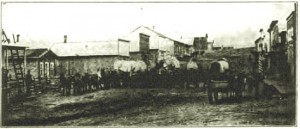
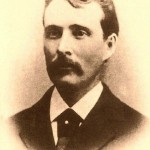
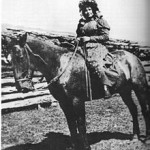
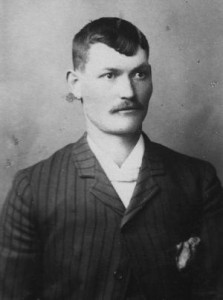
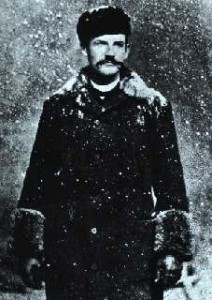
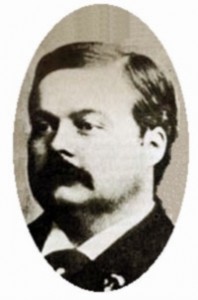
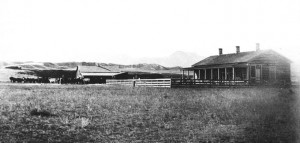
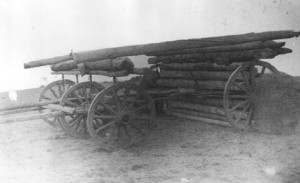


This is a keeper, Kirsten! Since my next WIP is based on a fictional version of the Johnson County War, I owe you for the info in this great blog. Such an epic story.
Great, Elizabeth! I’m thrilled I could help! Your WIP sounds like an amazing story if based on the Johnson County War. You’ll have plenty of action that’s for sure.
All the best
–Kirsten Lynn
I remember seeing some show on the History channel about Cattle Kate. Thanks for the additional info regarding the war. I hope to read more historical info regarding the Old West in your future blogs.
Howdy, Debby! I think simply because of who she was and her sensationalized story (even back then) Cattle Kate is the figure most people think of when the Johnson County War is discussed. I know until I started digging into the history of this event I’d never heard of Nate Champion or Tom Waggoner, but I find their stories more interesting and tragic then even Ella and Jim’s. It was a sad time in Wyoming history for sure.
Thanks for stopping by and I hope you’ll join me next Monday for another trip to the Old West!
–Kirsten Lynn
Crazy times back then! I’m always amazed at what people were able to get away with – even get paid for. Still proud to be a Wyomingite!
It is amazing what people got away with, and in this case it was simply everyone return home and continue on as if nothing happened. Kind of like two kids fighting at school once split up everyone just let it die.
Amen, it’s still good to be a Wyomingite! 🙂
–Kirsten Lynn
Pingback: WAGONS WEST!! THE SPRING CREEK RAID!! | Kirsten Lynn Wild West
Your version of the story is more complete and accurate than most, great job !!! come by and visit us on facebook Nate Champion at the KC Ranch, thanks again, Dale Champion, (gg nephew)
Thanks so much, Dale! I’m so glad you stopped by and read my post, and thank you for leaving a comment! Glad you found it informative.
I’ll definitely check out your website!
–Kirsten Lynn